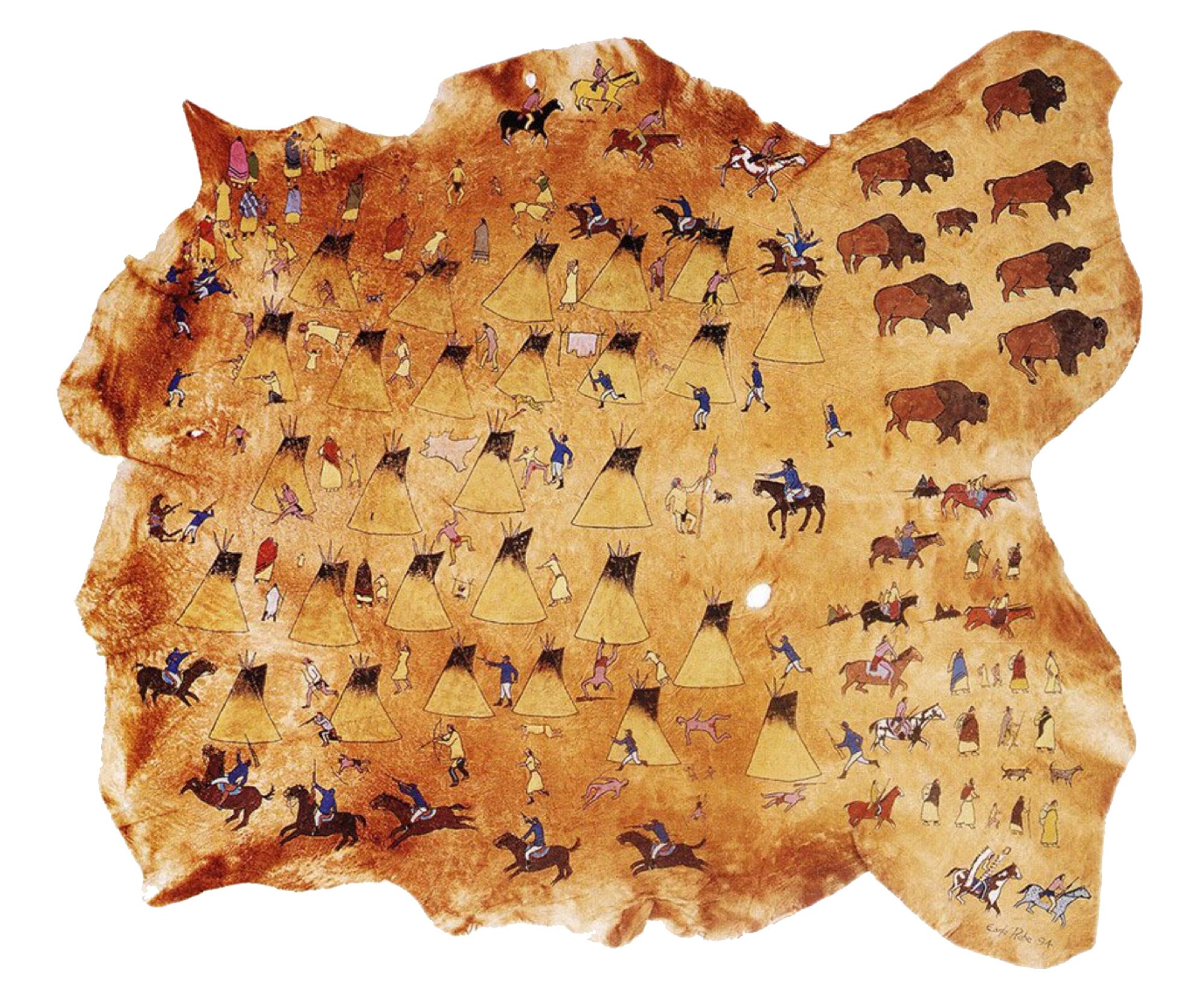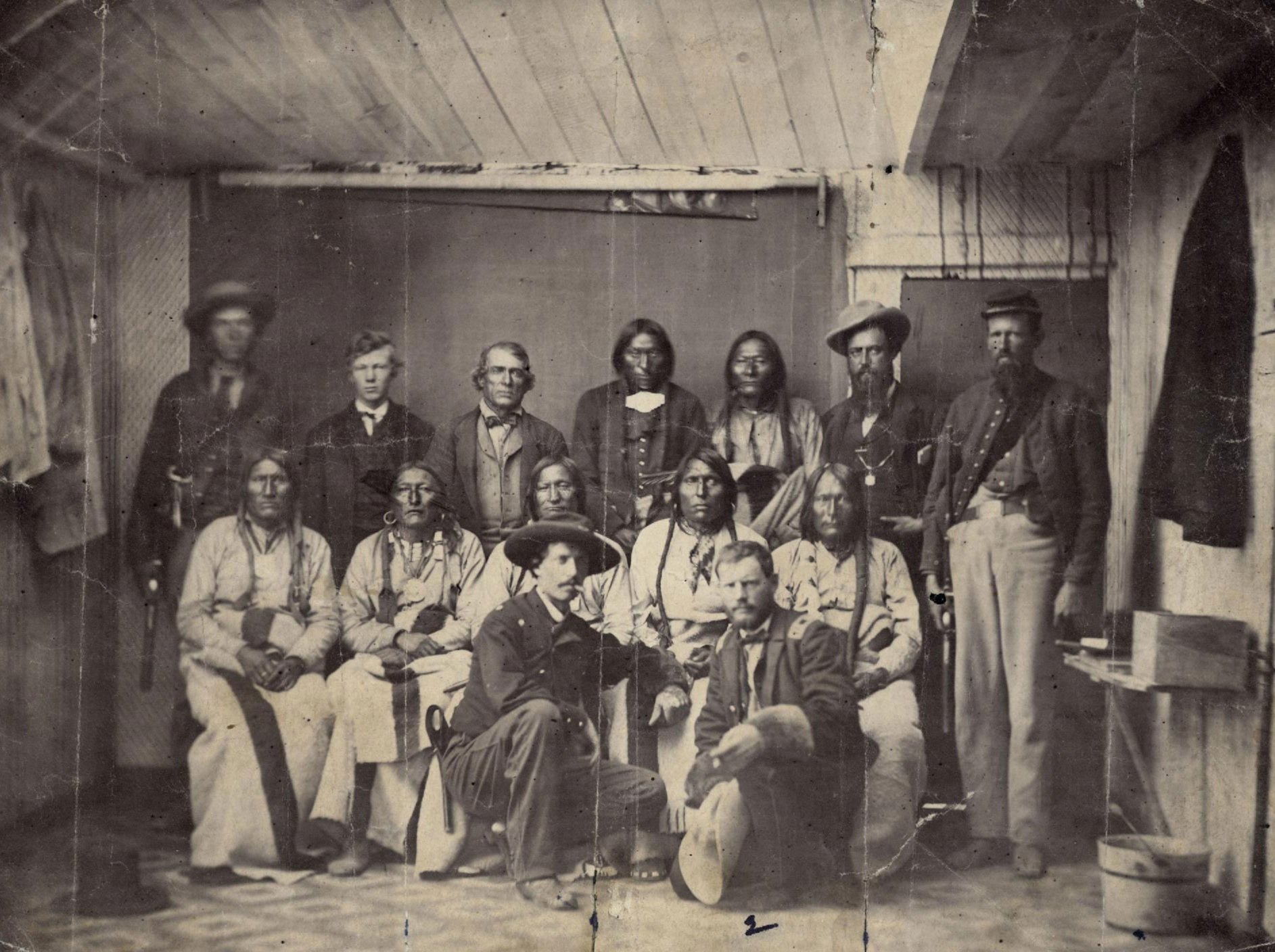
History
Above: Sand Creek Massacre, Paint on Buffalo Hide, Eugene Ridgely, Sr. 1994
Changing the Course of History
Established in 2007, Sand Creek Massacre National Historic Site sheds light on a chaotic, horrific, tumultuous, and bloody moment in American history and its enduring legacy.
On November 29, 1864, Colonel John M. Chivington led 675 U.S. volunteer soldiers to a Chiefs’ village of about 750 Cheyenne and Arapaho people camped along the banks of Big Sandy Creek in southeastern Colorado territory.
Although the Cheyenne and Arapaho - under Chiefs Black Kettle, White Antelope, Left Hand and others - believed they were under the protection of the U.S. Army on their assigned ratified treaty lands, Chivington's troops attacked and killed about 230 people, composed mostly of women, children, and the elderly.
This abbreviated chronology is largely drawn from the 2015 Sand Creek Massacre National Historic Site General Management Plan with minor editing and additions.
“We should not be afraid to criticize and condemn that which is inexcusable…we will not run from this history.”
- Colorado Governor, John Hickenlooper






